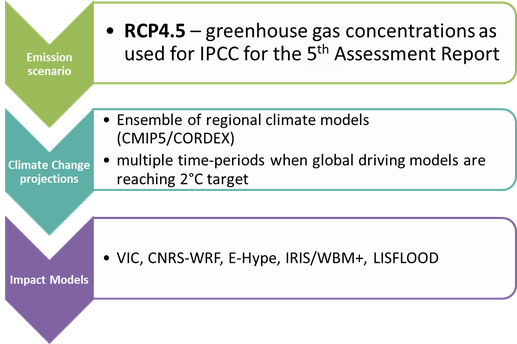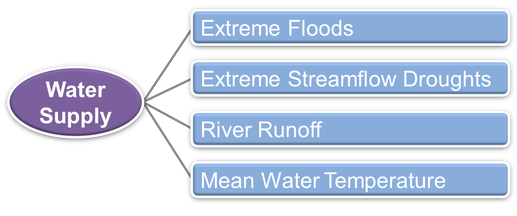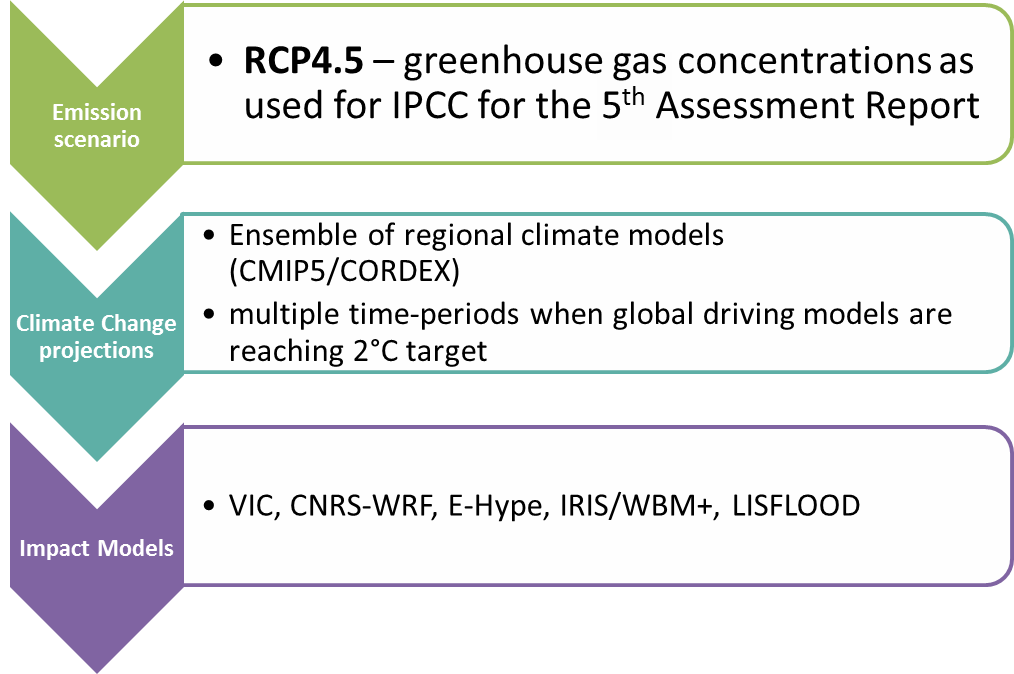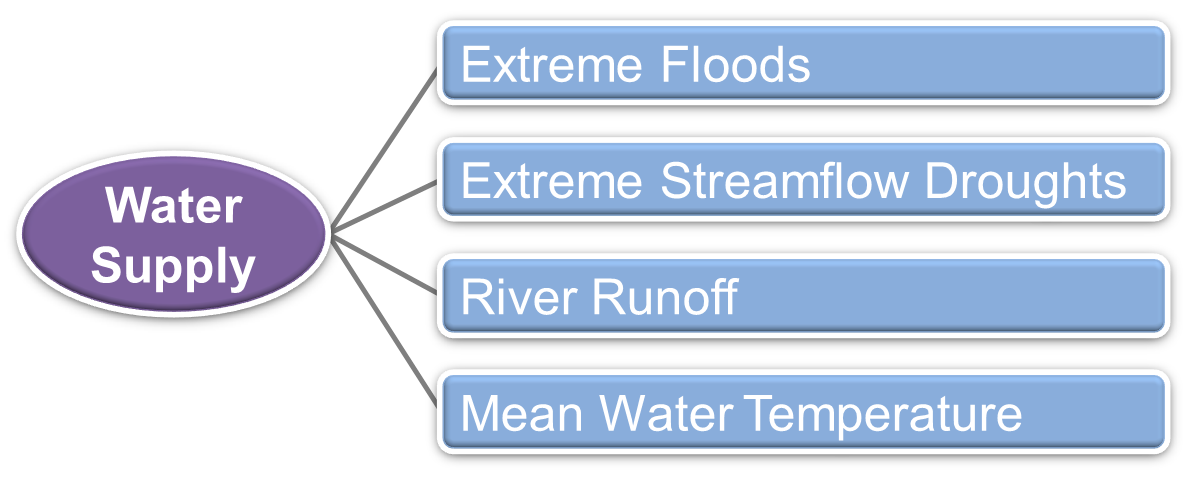The Water Supply Story
1. Why is it important to consider climate change impact for the water sector?
Future climate change is expected to have a strong impact on various aspects of the water sector. This diversity of potential impacts is also reflected in the research conducted within the IMPACT2C project on the water sector.
Specific analyses have been dedicated to the consequences of a 2 °C global warming on hydrological extremes, like extreme floods and extreme streamflow droughts. These extremes both have a strong impact on the livelihood either via direct human losses or via economic losses.
In addition to the hydrological extremes, potential changes in hydrological mean characteristic have been in the focus of the project. Exemplarily, two parameters were analyzed: mean evapotranspiration which is key for agricultural production and mean river runoff which has a strong impact on the energy and transportation sector, among others.
On top of the quantitative aspects, the IMPACT2C community also analyzed potential changes in mean water temperature. This is linked to energy production as it changes the cooling water potential. A change in mean water temperature can also have implications for water quality.


2. What are the key findings?
An increase in precipitation can in principle lead to higher levels of mean river runoff and more evapotranspiration. Generally, there is an increase in precipitation projected over northern Europe, and a decrease over the southern parts. For this reason, annual mean river runoff is projected to increase roughly north of 45 ˚N whereas further south there is a tendency for a decrease. The same spatial pattern with a general tendency for an increase in the north and a decrease in the southern parts of Europe holds true for evapotranspiration. From a water balance perspective, the increase in evapotranspiration over central and northern Europe accounts for about 30 to 50 % of the increase in precipitation over this region.
For hydrological extremes, the situation is a bit different. The magnitude of extreme flood events is generally expected to strongly increase over most parts of central and southern Europe, which might be linked to a general increase in extreme rainfall events. Over Scandinavia, however extreme flood magnitude seems to be related to snow accumulation, therefore the projected decrease in extreme flows over this region can be attributed to a decrease in snow accumulation.
For extreme streamflow droughts, the spatial pattern of projected changes is rather diverse due to multiple, region specific factors influencing the generation of droughts. What stands out is that some streamflow drought hotspots are expected to be more intense in southern Europe, whereas less intense streamflow droughts are projected to occur over large areas of Fenno-Scandinavia and parts of eastern Europe.
The mean water temperatures are projected to increase almost everywhere in Europe by more than 1°C in the annual mean.
References:

